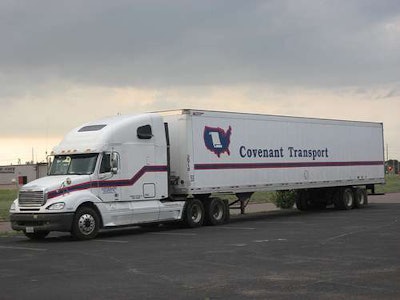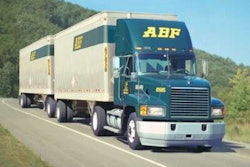
Covenant Transportation Group on Wednesday, April 28, announced financial and operating results for the quarter ended March 31. Highlights included freight revenue excluding fuel surcharges of $129.3 million, an increase of 5.9 percent compared with the first quarter of 2009; total revenue including fuel surcharges of $152.0 million, an increase of 13.6 percent compared to $133.8 million; operating income of $1.8 million and an operating ratio of 98.6 percent compared with an operating loss of $5.1 million and an operating ratio of 104.2 percent; and a net loss of $2.2 million compared with a net loss of $5.5 million.
“The first quarter of 2010 produced the highest first-quarter revenue per truck since being public in 1994,” said David R. Parker, chairman, president and chief executive officer. “We continued to address cost controls and efficiency measures in the quarter. Through reduced empty miles, reduced broker freight dependency, improved miles per gallon and effective fuel hedge activities, we were able to largely mitigate the rising cost of fuel, resulting in a half-cent-per-mile increase in our cost of fuel, net of fuel surcharge revenue.”
Parker said the company sustained overall compensation reductions while achieving a new record high ratio of tractors per nondriver employee, a sequential improvement over Covenant’s prior best from the fourth quarter of 2009. “We continued to benefit from consolidating maintenance facilities and maintenance supervision amongst our subsidiaries last year, utilizing best practices across these facilities, and maintaining a young tractor fleet, which resulted in a reduction in maintenance costs per mile as compared to the first quarter of 2009,” he said. “Our expenses were reduced by some communications and property tax expense credits during the quarter.”
Richard B. Cribbs, senior vice president and chief financial officer, said the company’s annual tractor fleet plan for 2010 has not changed. “We still expect to purchase approximately 900 tractors and dispose of approximately 900 tractors, for anticipated full-year net capital expenditures of approximately $60 million to $70 million,” Cribbs said. “With an average fleet age of 24 months, we believe there is significant flexibility to manage our fleet, and we plan to regularly evaluate our tractor replacement cycle and new tractor purchase requirements.”










